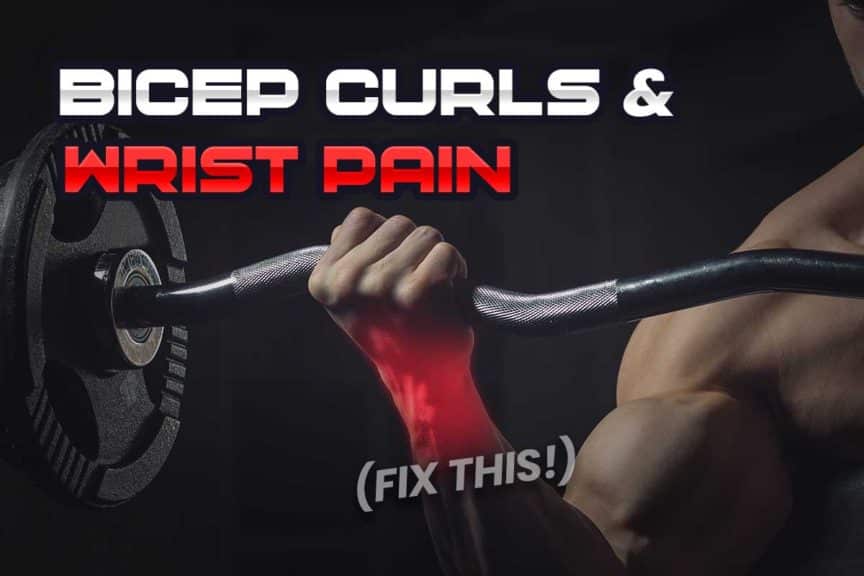What’s the point of working out if you can’t do curls, right? I mean, is anything more satisfying in the gym than getting a hefty arm pump? If you’re having wrist pain from curls, we need to get this issue sorted out for you so you can get back in there and start pumping away!
Wrist pain from curls often results from irritated tendons, improper grip positioning, wrist instability, excessively heavy loads and training volume, and previous injury. Solutions involve fixing your wrist position, improving stability, optimizing training loads, and improving tendon health.
Don’t try to ignore the pain and push through it; take the time to read this article — by the end of it, you’ll likely have a much better understanding of what might be going on with your wrist and how to get it back under control.
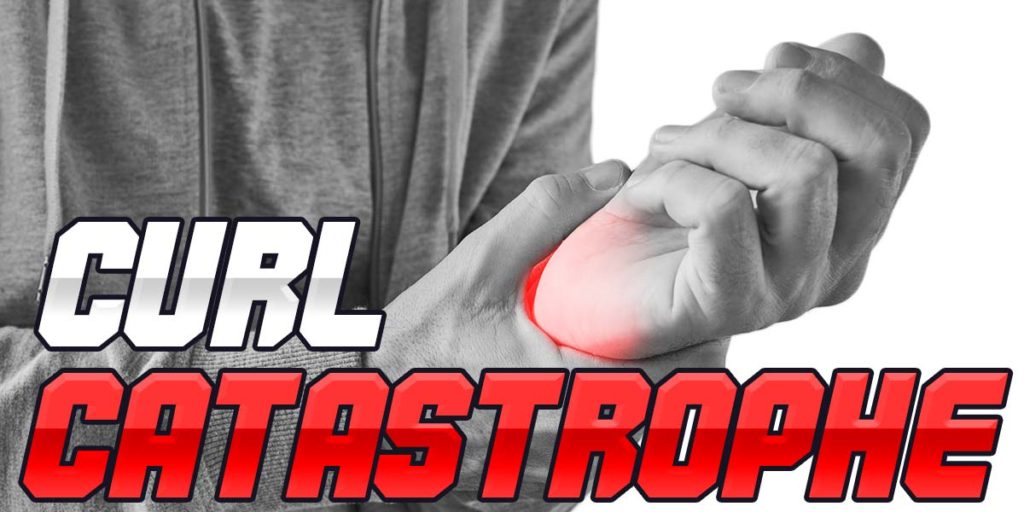
ARTICLE OVERVIEW (Quick Links)
Click/tap on any headlines below to instantly read that section!
Basic wrist anatomy
Universal issues & solutions
Specifics: Underhand grip curls
Specifics: Overhand grip curls
Specifics: Neutral grip curls
Bonus tip: Referred pain from this muscle
Related article: Why Your Wrists Hurt After Kettlebell Swings (Solutions & Easy Fixes)
Disclaimer: While I am a physical therapist, I am not YOUR physical therapist. As a result, I cannot tell you whether or not any treatments or training methodologies mentioned on this website or in this article may or may not be appropriate for you, including treatment for wrist pain. By following any information within this post, you are doing so at your own risk. You are advised to seek appropriate medical advice for any pain you may be experiencing.
A quick note: As we dive into the meat and potatoes of this article, keep in mind that these tips should be practical for whether you’re doing dumbbell, barbell, or cable curls (or any other type of curl). The mode of resistance (i.e., what you’re holding onto) isn’t nearly as influential for eliciting wrist pain as the load and the subsequent wrist position and curl execution.
And, of course, keep in mind that I can’t address every single wrist issue that may likely arise from curls within a single article. Still, what follows are the more common issues lifters and active individuals run into regarding wrist pain from curls.
Basic wrist anatomy
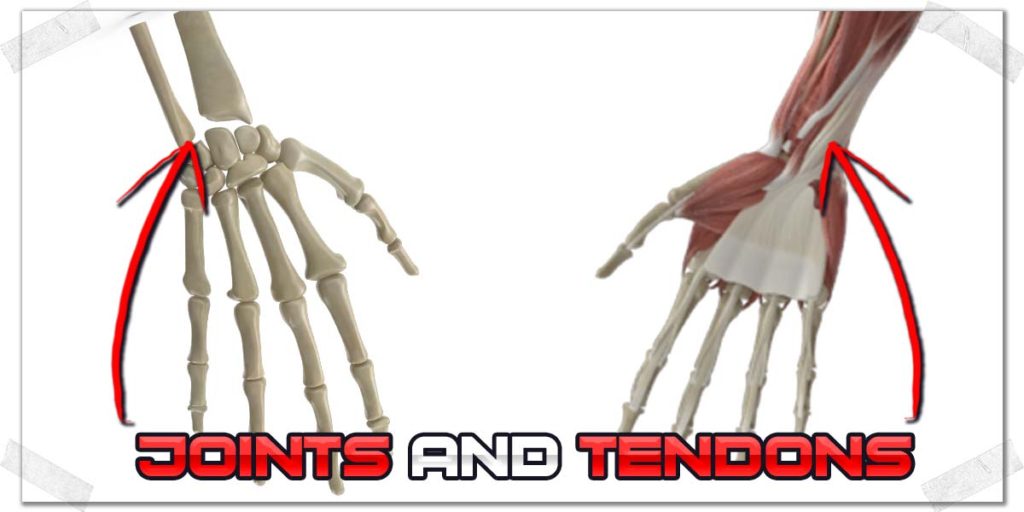
For any of my blog articles addressing causes of pain and dysfunction, I always start off with a basic run-through of the involved anatomy. The better you understand the structures and tissues that could potentially be involved, the more intuitive you’ll find the following steps to be when it comes to taking appropriate action.
So, don’t skip this section! I’ll keep it light and brief, I promise.
Wrist tendons
Tendons are the structures that anchor a muscle down onto the bone. In the case of the wrist, the tendons that cross over this area down into the hand come from muscles that originate on the forearm bones (radius and ulna), and some of them even attach to the very base of the humerus (on the medial and lateral epicondyles).
For this reason, if you’re experiencing tendon pain in your wrist, checking their respective muscles along the forearm will likely be a wise idea, as grumpy tendons can often have grumpy muscles as well. (You’d be amazed at how often I can clear up wrist pain in lifters by treating the muscles of the respective wrist tendons along the forearm).
Wrist bones & joints
The bones and joints of the wrist and hand are quite numerous. And for this reason, we can produce a vast array of movements. For the sake of this article, These are the joints worth mentioning:
- The radiocarpal joint
- The distal radioulnar joint
These are the joints that most people think of when they think of the wrist. While there are numerous joints within the hand, which can influence wrist dysfunction or pain, they’re beyond the scope of what this article will cover.
Cartilage
Cartilage is a type of tissue in the body that serves different roles. The only piece of cartilage that’s pertinent to this article is the triangular fibrocartilage complex (TFCC). It’s a unique piece of cartilage that helps stabilize the wrist and absorb forces through the joint.
Nerves
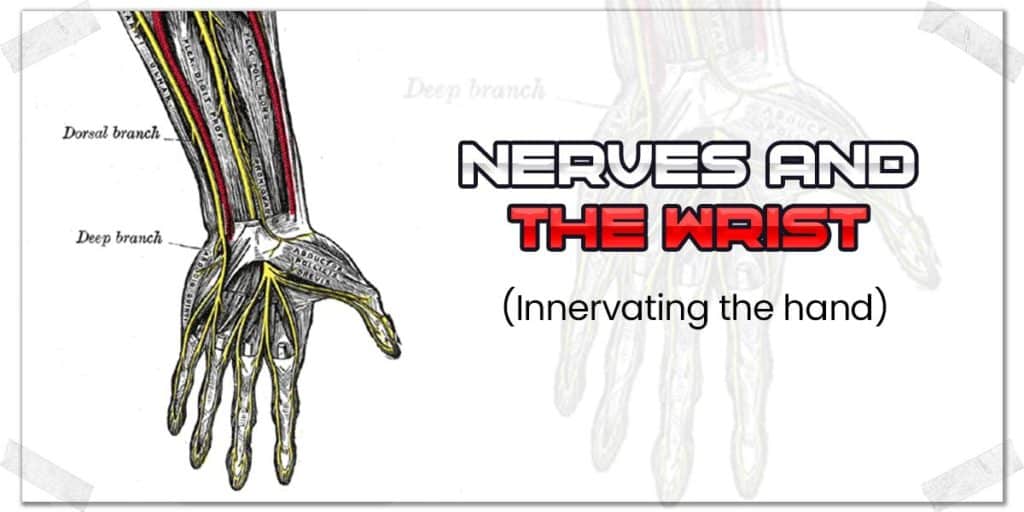
Three primary nerves cross the wrist and run down to the hand. They are:
- The median nerve
- The ulnar nerve
- The radial nerve
For the sake of this article, I’m only going to focus on the median nerve, as it is the one nerve by far that often leads to wrist pain, primarily through a condition known as carpal tunnel syndrome (CTS). Specifics of this condition will be discussed below in the “universal issues” section.
The median nerve arises from various nerve contributions from the neck and runs down the arm into the hand on the underside of the wrist.
See, I told you I’d keep this anatomy section brief and basic!
Universal issues & solutions
Whether you’re curling with a traditional barbell, an EZ curl bar, dumbbells, kettlebells, cable machines, etc., this section of the article will unpack issues that can transcend whatever you’re specifically holding onto for your curls or whatever type of curls you may be doing.
After this section, specific issues that are likely to arise with different types of curls will be discussed. However, keep in mind that any of these universal issues can arise with (and be problematic) for any type of curl.
Excessively heavy loads & volume
Training with extremely high levels of resistance or training excessively high volume of curls (especially when coupled with high resistance loads) is a surefire way to irritate the tendons in your wrist and forearm.
Excessively heavy loads can lead to tendon conditions such as:
- Tendinitis
- Tendinopathy
- De Quervains tenosynovitis
Note that with De Quervain’s tenosynovitis, it would likely be most irritated with neutral-grip curls. Still, it isn’t necessarily confined to this type of curl. For more of the specifics of why you must get De Quervain’s tenosynovitis (sometimes referred to as De Quervain’s syndrome) under control as quickly as possible, keep reading this article.
The solution for tendon issues in the wrist
If your wrist pain is only coming on when using relatively high loads, backing off on the weight or intensity of your movement is likely the first step to take. Don’t worry; it’s not a forever thing; just do this long enough until you have let any tendon irritation settle down and have further identified the root cause of the issue.
If you want to learn how you can still make great gains in biceps size and strength without loading heavy, you can read up more on a training methodology known as tempo training (which increases time under tension of the working muscles).
You can also read up on blood flow restriction training (BFR). BFR has some great evidence behind its use for increasing muscle size and strength using only around 30% of your one-repetition maximum!
Pro tip: If you’re getting pain around the inside or outside of your elbow joint when doing curls, it can very likely be the same tendon condition as what you might be experiencing down at your wrist.
Wrist instability
We’re all put together slightly differently. Some of us tend to have otherwise unremarkable joints, while others tend to be a bit more lax or mobile than what might be considered normal.
If you know that your hand or wrist joints tend to move a bit more than otherwise normal (be it due to a previous injury or just how you were “put together,” there’s not a whole lot you can do to change this.
The solution for wrist instability

If you need a bit of extra stability around your wrist, your best bet is likely to go with wrist wraps, which will act as an external source of reinforcement for your wrist. If you don’t know what these are, they are simply woven elastic material that you firmly wrap around your wrists and secure.
When applied with the appropriate amount of tension, the result is added multidirectional stability, sort of acting like a cast around the joints to prevent them from moving as much.
Pro tip: If you don’t have wrist wraps, you can opt for wrapping athletic tape around your wrists. While perhaps not as ideal (for a few reasons), it can still get the job done when it comes to giving your wrists some added stability for your curls and other workout exercises.
Median nerve compression
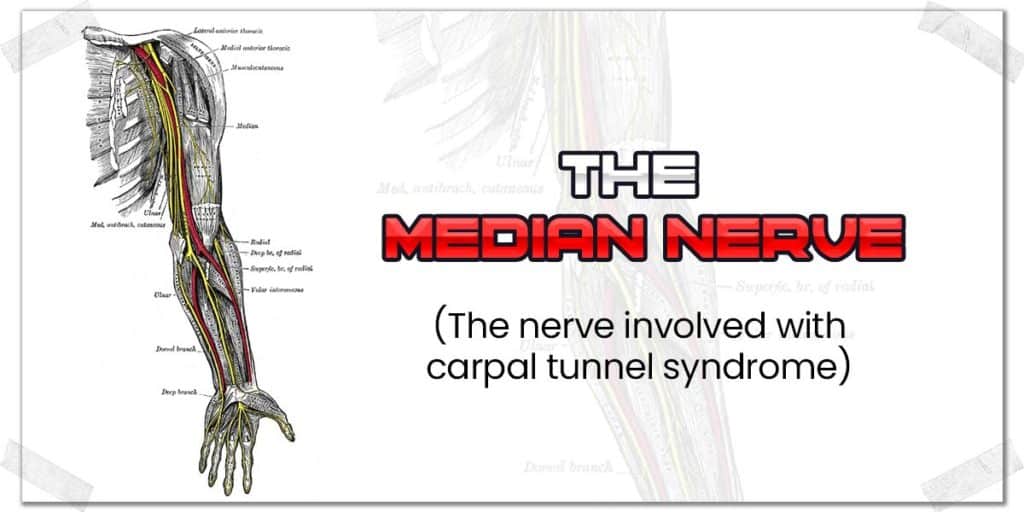
Carpal tunnel syndrome (CTS) results from compression of the median nerve as it passes under the retinaculum (the top of the carpal tunnel) of the wrist. It tends to present itself with symptoms of pain along with numbness or altered sensation (paresthesia) in the hand.1
While curling weights may not have caused the issue, it might be something that provokes or continues to irritate the condition since repetitive motions or movements of the wrist can cause or worsen the condition. This means you could be especially unlucky if you do activities such as typing at a computer all day and then do lots of wrist movements in the gym afterwards.
The solution for median nerve compression
If you have symptoms consistent with CTS, you’re going to want to get it looked at, as early-stage CTS tends to have much more favorable outcomes than when compared to chronic and untreated CTS.2,3 In my humble opinion, this can be a bit of a complex issue and isn’t worth messing around with.
Additionally, here are some other strategies you can try:
- Avoid wearing wrist wraps or other compressive devices around your wrists, as the added compression might further irritate or worsen the pre-existing compression of the median nerve into your wrist and hand.
- Modify all of your curls or other exercises that elicit or provoke the pain or symptoms you may be experiencing. Do this until you’re confident or have been told it’s ok to resume your regular training parameters (exercises, intensity, etc.).
If you want to read up more on CTS and what the current scientific recommendations are, start with this article:
Carpal Tunnel Syndrome (Physio-pedia.com article)
Previous injuries
The main injury to watch out for here would likely be one that affected a specific type of cartilage within your wrist, known as the triangular fibrocartilage complex (TFCC, for short).
TFCC injuries often result from traumatic falls onto an outstretched hand (often shortened to a “FOOSH”). These types of impacts can tear or otherwise traumatize the TFCC, which can then become painful when the wrist is stressed through resistance or exposed to certain positions (or both).
If you have a history of falling onto your wrist, or you repeatedly experience clicking, popping, or painful sensations on the ulnar side of your wrist, getting an orthopedic assessment of your wrist would be a wise idea to help rule in or rule out the presence of a TFCC lesion.
In the meantime, you might have success with bracing your wrist, either using wrist wraps or with some athletic tape. Immobilizing the wrist can often effectively alleviate or eliminate wrist pain arising from the TFCC. You might also want to experiment with different types of curls to see if other variations will permit you to keep on curling without drumming up any wrist pain.
Specifics: Underhand grip curls
Excessive supination
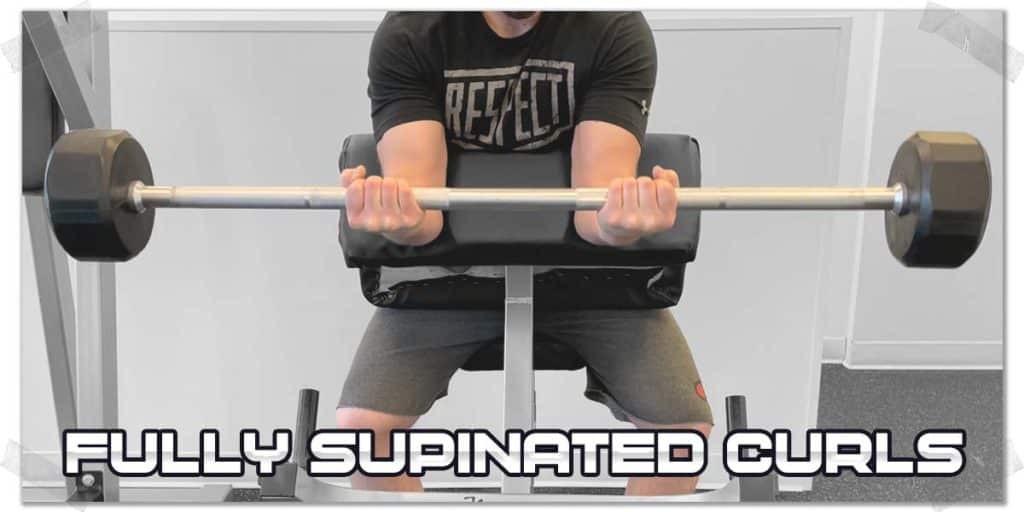
Supination refers to the movement of turning the palm upwards (think: you have to supinate your hand/forearm to hold a bowl of soup!). Normal range of supination of the forearm and, subsequently, the wrist should be around 90 degrees.4 Not everyone can achieve this position comfortably, however.
Lifters often run into issues when they have limited supination and attempt to do their curls with a traditional (i.e., straight) barbell. The result can be generalized wrist discomfort from forcing the wrist and forearm to hold a relatively overly intense supinated position while simultaneously subjecting it to hold the position for a given time against resistance.
The solution for pain with supinated curls
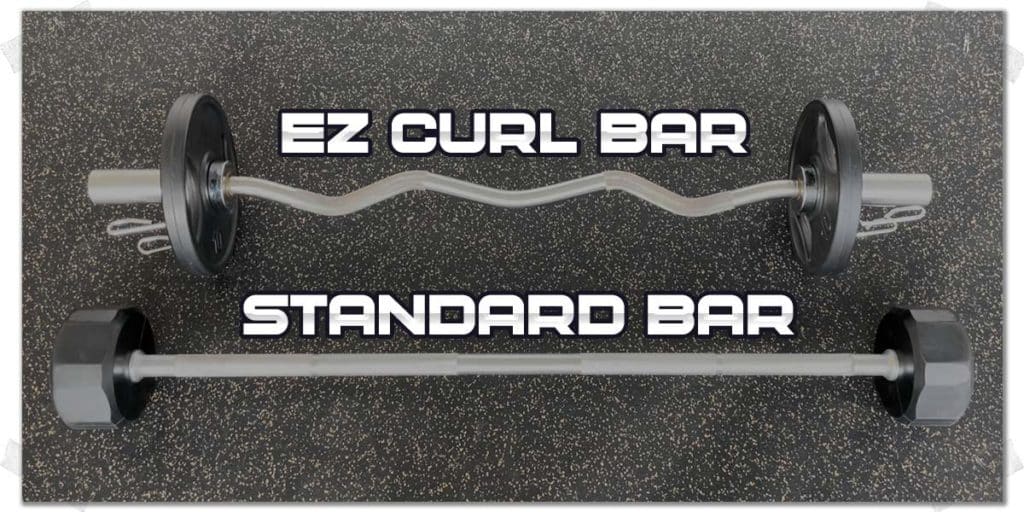
If you haven’t already tried, you can consider using the EZ curl bar (if one’s available), as this much-beloved barbell won’t force your wrists and forearms to supinate into a near as aggressive position.
If the EZ curl bar isn’t an option, your next best bet is likely to switch to dumbbells, as you can curl to your heart’s content without forcing the wrist to endure an overly supinated position.
Grip width
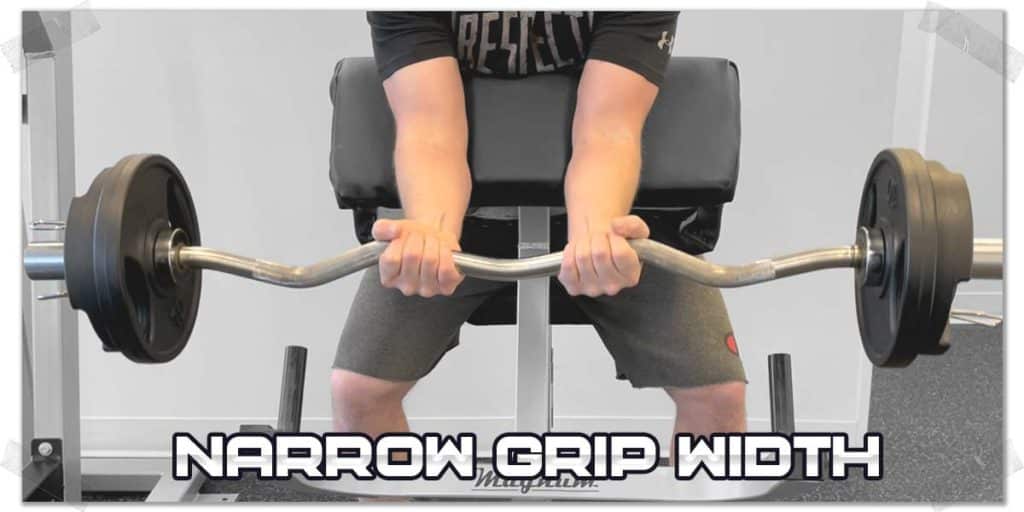
When using a barbell with an underhand (supinated) grip, some lifters find that the width of their grip can influence how their wrist(s) tolerate the exercise. This tends to be especially true if using a traditional (flat) barbell. As a result, you may want to experiment with how far apart you place your hands when doing barbell curls. Some lifters find that their wrists just don’t tolerate specific grip widths when doing supinated barbell curls.
The solution for grip width
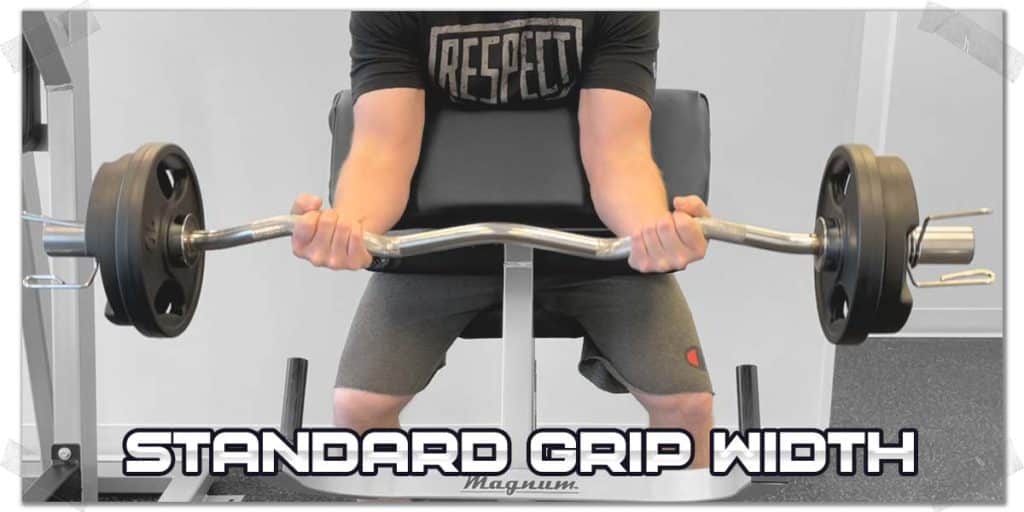
Since every person’s body and wrists will respond a bit differently, take some time to play around with your grip width to find what works best for you. Yes, I know, that’s not the most exciting advice, but playing around with your grip width for a handful of sessions can help you better understand what your wrists tolerate (or don’t tolerate) when it comes to your curls.
Pro tip: While any type of curling motion will work the biceps muscle, a more narrow grip will place greater emphasis on the brachialis muscle. In comparison, a wider grip will place more emphasis on the inner biceps head.
Specifics: Overhand grip curls
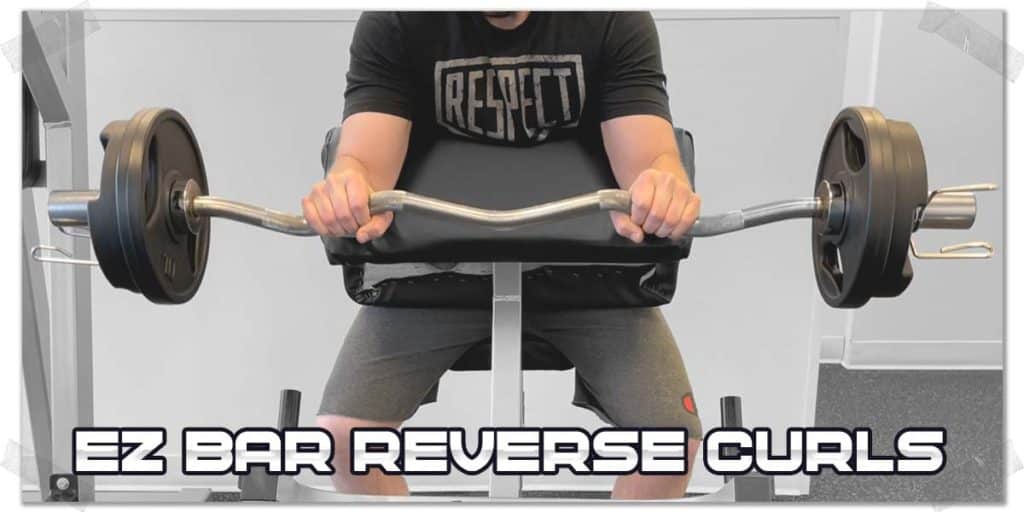
The overhand grip position is known as pronation. So, if you hear the term “pronated curls,” you’ll now know it means “overhand” curls, where the palms are facing downwards. These are often called “reverse curls” or “reverse-grip curls” in the gym.
The two most common types of overhand curls are the reverse grip curl and the Zottman curl. While the former can be done with a barbell or dumbbell, the latter can only be done with dumbbells.
Related article: Forearm Pain With The Zottman Curl? Here’s Why (And How To Fix It)
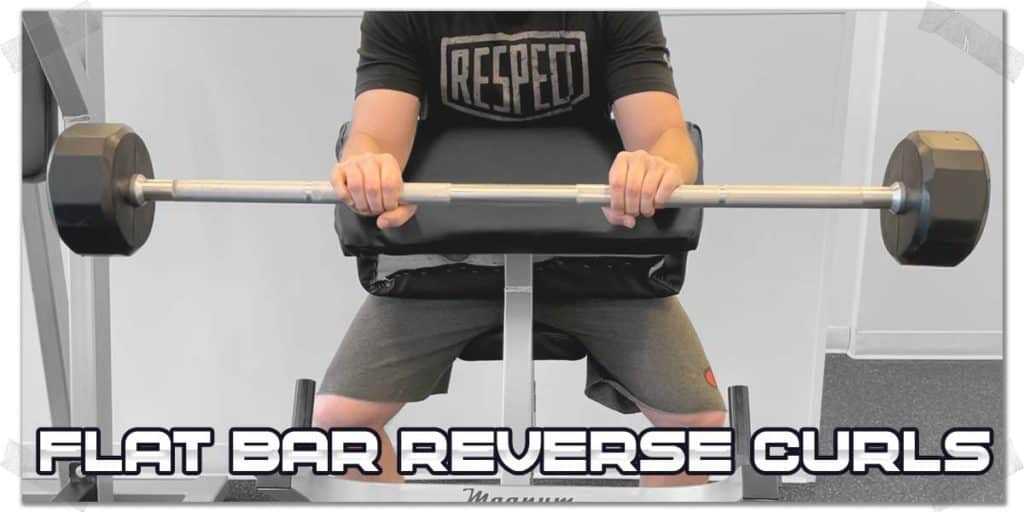
Pronated curls of any type have a reputation for beating up the extensor tendons of the forearm. While it’s typically (at least, in my anecdotal experience) more of the proximal tendons (up near the elbow) that get overworked with these curls, the distal tendons crossing the back of the wrist can take a beating as well. This is due to the high effort the extensor muscles and tendons have to exert to keep the wrist in a neutral position (i.e., not let the wrist collapse into a flexed position).
The solution for overhand grip curls
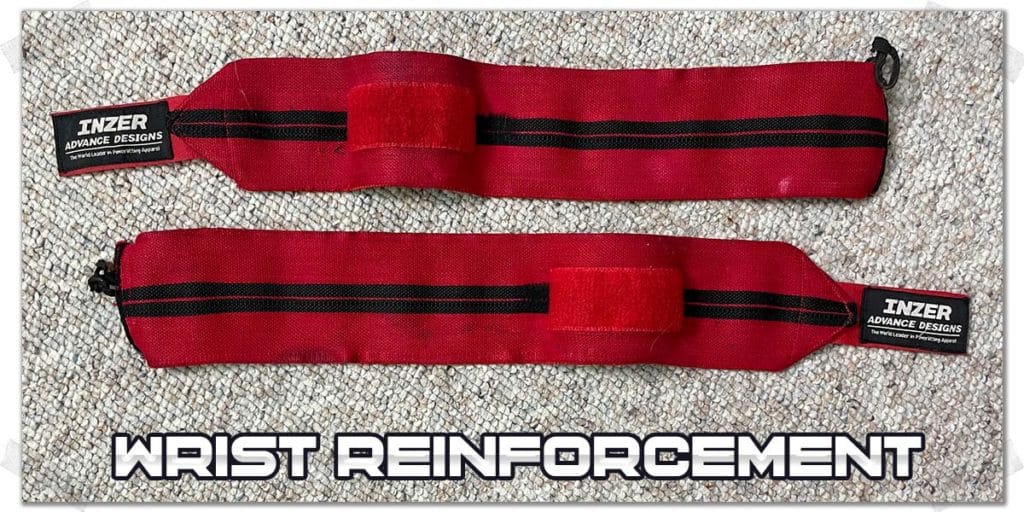
If you know that your wrist tendons are being chronically overexerted and paying the price in terms of producing discomfort, an easy (and often very effective) fix is to use wrist wraps, which will offload the working demands of the extensor tendons crossing your wrist.
If this still doesn’t take care of the problem entirely, you might want to consider giving some love (i.e., soft tissue treatments such as massage, tissue flossing, or IASTM) to the muscles in your forearm. There are various ways to help reduce the tightness and tension that these muscles can often be afflicted by, so find what works best for you and give those muscles some love.
Pro tip: Often, you can do self-treatments to these muscles, but seeking out a massage therapist, physical therapist or another specialist can be a wise idea as well.
Specifics: Neutral grip curls
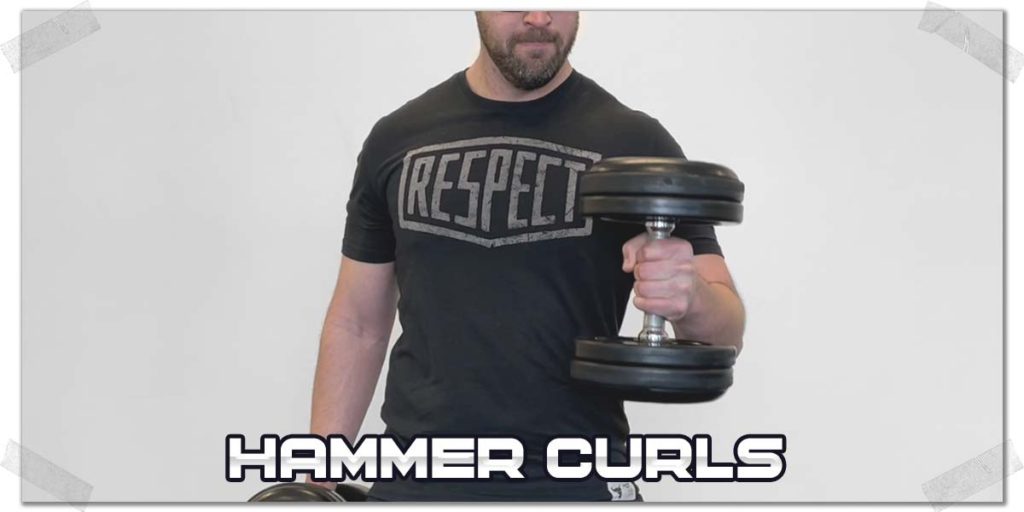
Neutral grip curls are most often referred to as hammer curls. If you’re using a neutral grip with a dumbbell, the ends of the dumbbell will be on the top and bottom of your hand rather than to the sides. And if you’re using a rope and pulley, the resistance will be coming from the bottom side of your hand.
When it comes to hammer curls, the biggest wrist issue to watch out for is a condition known as De Quervain tenosynovitis, which is an inflammation of the sheath of one or more tendons that cross your wrist and run down into your thumb.
De Quervain’s tenosynovitis can be an absolute bugger to treat, taking time, consistent effort and lots of patience. If it gets out of control, it can also drastically hamper your lifting with various upper body exercises, so do your best to get on it ASAP.
De Quervain’s is typically the result of overuse of the tendons of the thumb (which run up to the forearm). It can involve one or both of the following tendons:
- The extensor pollicus brevis
- The abductor pollicus longus
Pro tip: To determine if your wrist pain is coming from either of these tendons, you can perform the Finklestein test, which is a special test used in orthopedic practice to determine the level of sensitivity or irritation of either of these two tendons.
The solution for neutral grip curls
If you’re having pain along the backside of your thumb that runs up into your forearm, I’d recommend avoiding pain-provoking activities until you can get evaluated by a clinical professional.
It’s not that this is a life or death situation, but rather that this condition can be somewhat brutal (time-consuming and very activity limiting) to get under control if the tendon sheath becomes highly inflamed.
In the meantime, I would suggest:
- Foregoing hammer curls and any other neutral-grip exercise that might irritate the tendon(s), and opt for underhand-grip curls and other underhand-grip exercises.
- Decreasing the load/resistance or training intensity that you’re putting through your wrists. (This doesn’t mean using extremely light weight; just lighten the resistance as little as possible to the point of not experiencing pain with the exercise or movement.)
- Be mindful of your wrist movements. Exercises or movements that produce ulnar deviation will likely be most pain-provoking on these tendons since this position places them in the greatest amount of stretch (irritated tendons do not like being stretched).
Bonus tip: Referred pain from the subscapularis
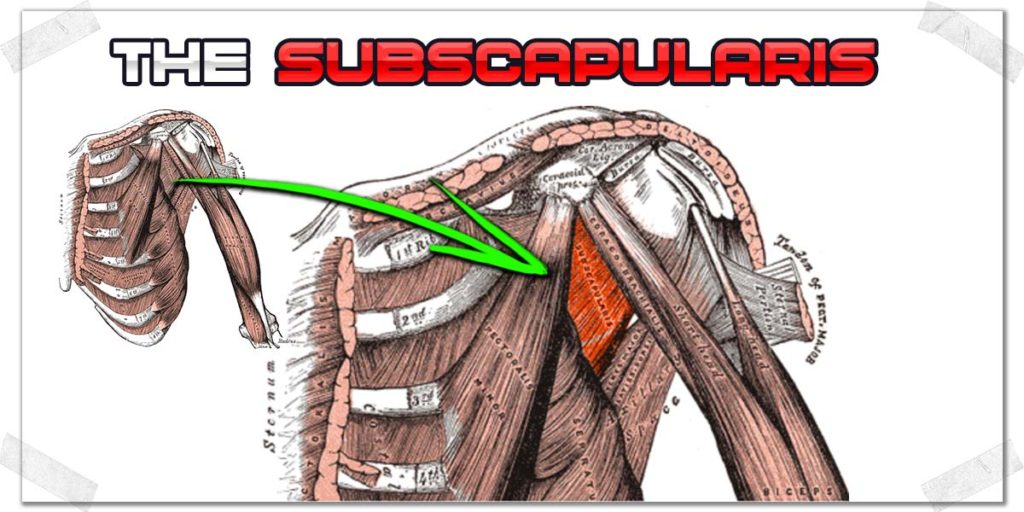
It may sound crazy, but sometimes pain in the wrist can come from a muscle in your shoulder. And if you think I’m crazy, I’ll have you know that this is a well-documented phenomenon in various medical and orthopedic textbooks.
Referred pain is the phenomenon of dysfunction arising in one area of the body but being felt in a distinctly different area. A classic example of this would be having a heart attack; people experiencing a heart attack will complain of pain in their left arm, but that’s not exactly where the heart is.
In the case of wrist pain, a muscle in the shoulder — called the subscapularis — can refer pain to the wrist in what’s termed “watch band pain” (the pain wraps around the wrist in the location and manner as a watch band).
Related Article: The ABSOLUTE Best Exercise for Subscapularis Strengthening: Here’s How
Referred pain from muscles tends to be rather achy feeling in its nature. So, if your wrist pain is sharp, stabbing, or burning in nature, it’s not likely to be referred pain.
But, if your wrist just feels achy or a bit throbby, you might want to have a qualified orthopedic specialist take a look at your subscapularis. They may be able to find some tight bands (known as trigger points) that reproduce the aching sensation in your wrist. If so, some soft tissue treatment to this muscle can help alleviate or even eliminate the discomfort you might otherwise be feeling in the wrist.
Pro tip: Because the subscapularis is so tricky to get at, you’ll likely need someone else to treat this muscle for you.
Final thoughts
If you’re experiencing wrist pain with any curling exercises, you’ll want to get on top of the issue ASAP, as the pain could progress to the point where it interferes with various other exercises in addition to your curls.
Take the tips and insight within this article and use it as the starting point for determining what might be going on with your wrist and the next best steps to take. And, as always, when in doubt, get professional insight from a qualified healthcare specialist!
References:
2. Chammas M, Boretto J, Burmann LM, Ramos RM, Santos Neto FC dos, Silva JB. Carpal tunnel syndrome-Part I (anatomy, physiology, etiology and diagnosis). Rev Bras Ortop. 2014;49:429-436.
4. Norkin CC, White DJ. Measurement of Joint Motion: A Guide to Goniometry. FA Davis; 2016.

Hi! I’m Jim Wittstrom, PT, DPT, CSCS, Pn1.
I am a physical therapist who is passionate about all things pertaining to strength & conditioning, human movement, injury prevention and rehabilitation. I created StrengthResurgence.com in order to help others become stronger and healthier. I also love helping aspiring students and therapists fulfill their dreams of becoming successful in school and within their clinical PT practice. Thanks for checking out my site!

